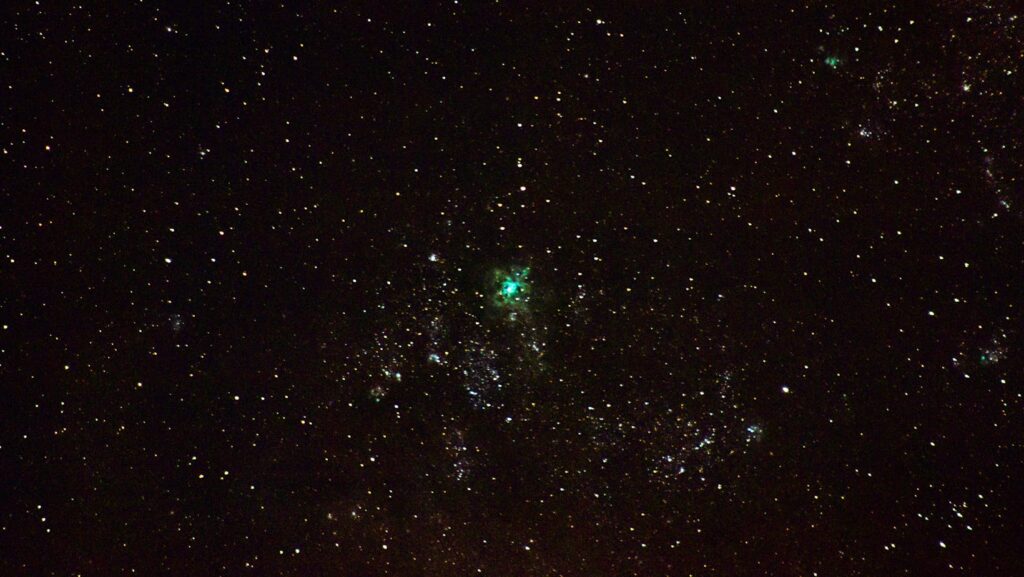
Have you ever gazed up at the night sky and marveled at the sparkling stars above? These celestial bodies aren’t just beautiful to behold; they’re keys to understanding the universe itself. This article will delve into the fascinating world of stars, exploring their formation, lifecycle, and the vital role they play in our cosmos.
Dibujo:sunnxka2lk0= Estrellas

Delving deeper into the captivating celestial world, this section unravels essential facts about stars. Demystifying their origin and existence sharpens understanding and deepens appreciation for these celestial wonders.
Stars represent the enormous, shining celestial bodies composed primarily of hot gases. They radiate energy, including light, due to the nuclear reactions inside them. To illustrate, our sun, the closest star to Earth, fuels life’s existence through its light and warmth. Intriguingly, the distant, flickering lights observable on a clear night represent stars like our Sun, potentially harboring their unique versions of our world.
Different Types of Stars in the Sky
These distinct stars form the majority of the celestial canopy, accounting for almost 90% of all stars in the universe. They are representative of the core life stage, a point in a star’s journey where fusion of hydrogen atoms into helium occurs. Our Sun exemplifies a main sequence star, with a stable period that can span several billion years.

Stars undergo dramatic transformation post the main-sequence phase, inflating into enormous sphere bodies known as giants and supergiants. They’re characterized by large surface areas and colossal brightness, but notably cooler temperatures. Giants, like Aldebaran in the Taurus constellation, are larger and brighter than main sequence stars but less than supergiants. Supergiants, such as Betelgeuse in the Orion constellation, can outshine the sun by a magnitude ranging from hundreds to thousands.
Contrary to their names, dwarf stars often showcase immense significance. Red dwarfs, the most prevalent type, exhibit smaller sizes and lower temperatures than giants. They captivate by their longevity, potentially shining for trillions of years due to efficient fusion. White dwarfs, remnants of stars that have exhausted their fuel, are compact yet incredibly dense, with a mass close to the Sun’s but confined to Earth’s size. Proxima Centauri, the nearest star to our solar system, is a notable example of a red dwarf.
Observing Stars in the Night Sky
Best Practices for Stargazing

Stargazing is an art matured through patience, observation and understanding. A clear, dark sky is the most basic and fundamental requirement for star observation. If possible, aim to escape city lights and take advantage of rural or high-altitude areas where light pollution is minimal. Give eyesight around 15-20 minutes to fully adapt to the darkness, enhancing night vision. Star charts or mobile applications help in identifying constellations, which can serve as reference in finding stars. Remember, gazing directly at stars makes them less visible due to the way human eyes function in low light.
Tools and Technologies to Enhance Observation
While one’s eyes can uncover numerous stars and constellations, additional tools escalate the observing experience significantly. Binoculars of any kind lay bare more stars and objects in the sky than visible to the naked eye. For a more detailed exploration, a telescope becomes instrumental. For example, a simple amateur telescope can reveal fascinating details like Jupiter’s bands or Saturn’s rings. Furthermore, numerous stargazing apps provide real-time identification of celestial bodies with just a point in the sky. SkyView, SkySafari and Star Walk are some highly rated stargazing applications. In conclusion, blended with the passion of stargazing, tools and technologies break open an extraordinary avenue of discovery.
Exploring the Night Sky
The night sky, a canvas of twinkling stars, offers a fascinating world for those who take the time to look up. With an understanding of star formation and classification, anyone can appreciate the diversity and beauty of these celestial bodies. Stargazing isn’t just about looking; it’s about patience, letting your eyes adjust, and using the right tools to unlock the sky’s secrets.
